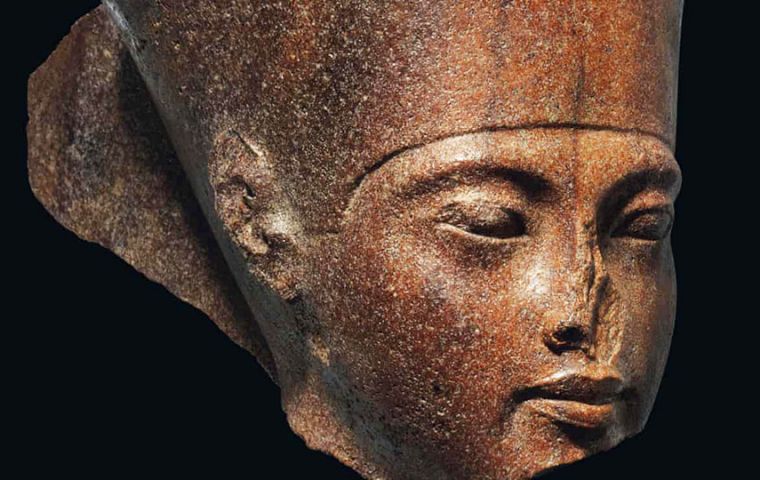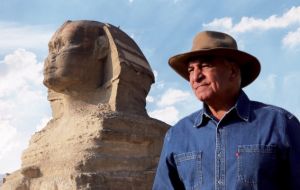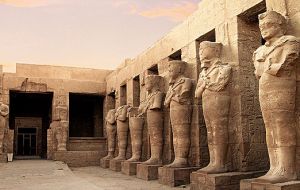MercoPress. South Atlantic News Agency
Despite Egyptian protests, a quartzite head of Tutankhamun auctioned in London
 Christie's auction house sold the 28.5-centimetre relic for £4,746,250 (US$5,970,000). No information about the buyer was disclosed.
Christie's auction house sold the 28.5-centimetre relic for £4,746,250 (US$5,970,000). No information about the buyer was disclosed. Former Egyptian antiquities minister Zahi Hawass said the piece appeared to have been “stolen” in the 1970s from the Karnak Temple complex just north of Luxor.
Former Egyptian antiquities minister Zahi Hawass said the piece appeared to have been “stolen” in the 1970s from the Karnak Temple complex just north of Luxor.  “We think it left Egypt after 1970 because in that time other artifacts were stolen from Karnak Temple,” Hawass said.
“We think it left Egypt after 1970 because in that time other artifacts were stolen from Karnak Temple,” Hawass said. A 3,000-year-old quartzite head of Egyptian “Boy King” Tutankhamun was auctioned off for US$6 million Thursday in London despite a fierce outcry from Cairo. Christie's auction house sold the 28.5-centimetre relic for £4,746,250 (US$5,970,000) at one of its most controversial auctions in years.
The famous pharaoh's finely-chiseled face - its calm eyes and puffed lips emoting a sense of eternal peace - came from the private Resandro Collection of ancient art that Christie's last parceled off for £3 million in 2016.
But angry Egyptian officials wanted on Thursday's sale halted and the treasure returned.
About a dozen protesters waved Egyptian flags and held up signs reading “stop trading in smuggled antiquities” outside the British auction house's London sales room.
Former Egyptian antiquities minister Zahi Hawass said from Cairo that the piece appeared to have been “stolen” in the 1970s from the Karnak Temple complex just north of Luxor.
“We think it left Egypt after 1970 because in that time other artifacts were stolen from Karnak Temple,” Hawass said.
The Egyptian foreign ministry had asked the UK Foreign Office and the UN cultural body UNSECO to step in and halt the sale.
But such interventions are rare and made only when there is clear evidence of the item's legitimate acquisition by the seller being in dispute.
Christie's argued that Egypt had never before expressed the same level of concern about an item whose existence has been “well known and exhibited publicly” for many years.
“The object is not, and has not been, the subject of an investigation,” Christie's said in a statement.
The auction house has published a chronology of how the relic changed hands between European art dealers over the past 50 years.
Its oldest attribution from 1973-74 places it in the collection of Prince Wilhelm of Thurn and Taxi in modern-day Germany.
This account's veracity was called into doubt by a report from the Live Science news site last month suggesting that Wilhelm never owned the piece.
Wilhelm was “not a very art-interested person,” his niece Daria told the news site.
A journalist and art historian who knew Wilhelm told Live Science site that the prince had no arts collection at all.
Tutankhamen became commonly known as King Tut and made into the subject of popular songs and films.
International conventions and the British government's own guidance restrict the sale of works that were known to have been stolen or illegally dug up.
The British Museum has been wrangling for decades with Greece over its remarkable room full of marble Parthenon friezes and sculptures.
Egypt's own campaign to recover lost art gained momentum after numerous works went missing during the looting that accompanied former president Hosni Mubarak's fall from power in 2011.




Top Comments
Disclaimer & comment rulesCommenting for this story is now closed.
If you have a Facebook account, become a fan and comment on our Facebook Page!